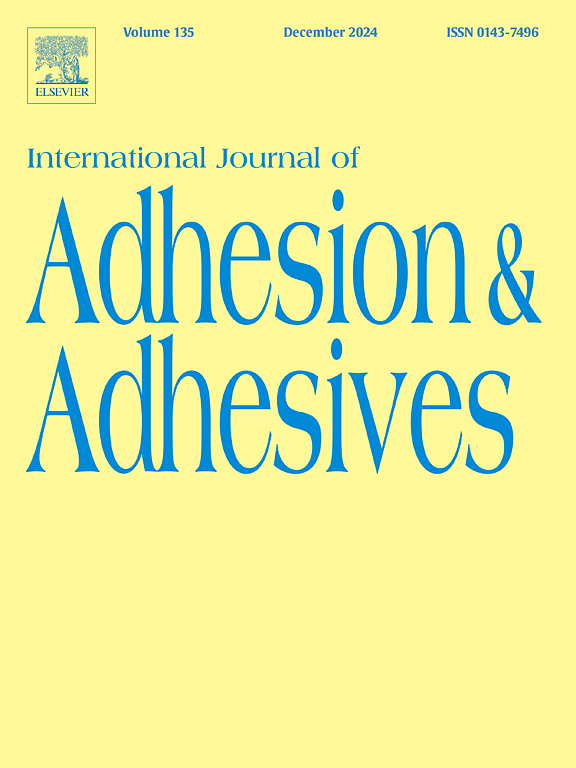Fatigue fracture mechanisms and strength improvement of epoxy adhesive joints with surface Treatment: An integrated experimental and molecular dynamics study
IF 3.5
3区 材料科学
Q2 ENGINEERING, CHEMICAL
International Journal of Adhesion and Adhesives
Pub Date : 2025-04-23
DOI:10.1016/j.ijadhadh.2025.104040
引用次数: 0
Abstract
In recent years, enhancing the long-term reliability of adhesive bonding has become crucial for the innovative design of multi-material structures aimed at reducing the structural weight of transportation systems. As a result, it is essential to elucidate the mechanisms behind fatigue fracture and propose methods to improve the fatigue strength of adhesive joints. Surface modification of the adherend in adhesive joints has shown great promise in significantly increasing fatigue strength by promoting stable fracture, specifically cohesive fracture. This study experimentally demonstrates an increase in the fatigue strength of adhesive joints through the application of silane coupling agent (SCA) treatment, resulting from enhanced chemical bonding at the adhesive interface. Molecular dynamics (MD) simulations were employed to model the various cross-linking reactions occurring at the resin/SCA/alumina interface, revealing how SCA modifies the interface at the atomistic level. The MD simulation further elucidates the fatigue fracture mechanisms of adhesive joints within the epoxy resin during cyclic loading, with a particular focus on the void-induced cracking as well as void growth and coalescence under the high- and low-stress fatigue conditions, respectively.
表面处理的环氧胶粘剂接头的疲劳断裂机制和强度提高:综合实验和分子动力学研究
近年来,提高粘接的长期可靠性已成为旨在减轻运输系统结构重量的多材料结构创新设计的关键。因此,有必要阐明疲劳断裂的机理,并提出提高粘接接头疲劳强度的方法。通过对粘接接头进行表面改性,可以显著提高接头的疲劳强度,促进稳定断裂,特别是粘接断裂。本研究通过实验证明,通过硅烷偶联剂(SCA)处理,通过增强粘合界面的化学结合,提高了粘合接头的疲劳强度。采用分子动力学(MD)模拟了树脂/SCA/氧化铝界面上发生的各种交联反应,揭示了SCA如何在原子水平上改变界面。MD模拟进一步阐明了循环加载过程中环氧树脂粘结接头的疲劳断裂机制,重点关注了高应力和低应力疲劳条件下的空洞诱导开裂以及空洞的生长和聚结。
本文章由计算机程序翻译,如有差异,请以英文原文为准。
求助全文
约1分钟内获得全文
求助全文
来源期刊

International Journal of Adhesion and Adhesives
工程技术-材料科学:综合
CiteScore
6.90
自引率
8.80%
发文量
200
审稿时长
8.3 months
期刊介绍:
The International Journal of Adhesion and Adhesives draws together the many aspects of the science and technology of adhesive materials, from fundamental research and development work to industrial applications. Subject areas covered include: interfacial interactions, surface chemistry, methods of testing, accumulation of test data on physical and mechanical properties, environmental effects, new adhesive materials, sealants, design of bonded joints, and manufacturing technology.
 求助内容:
求助内容: 应助结果提醒方式:
应助结果提醒方式:


